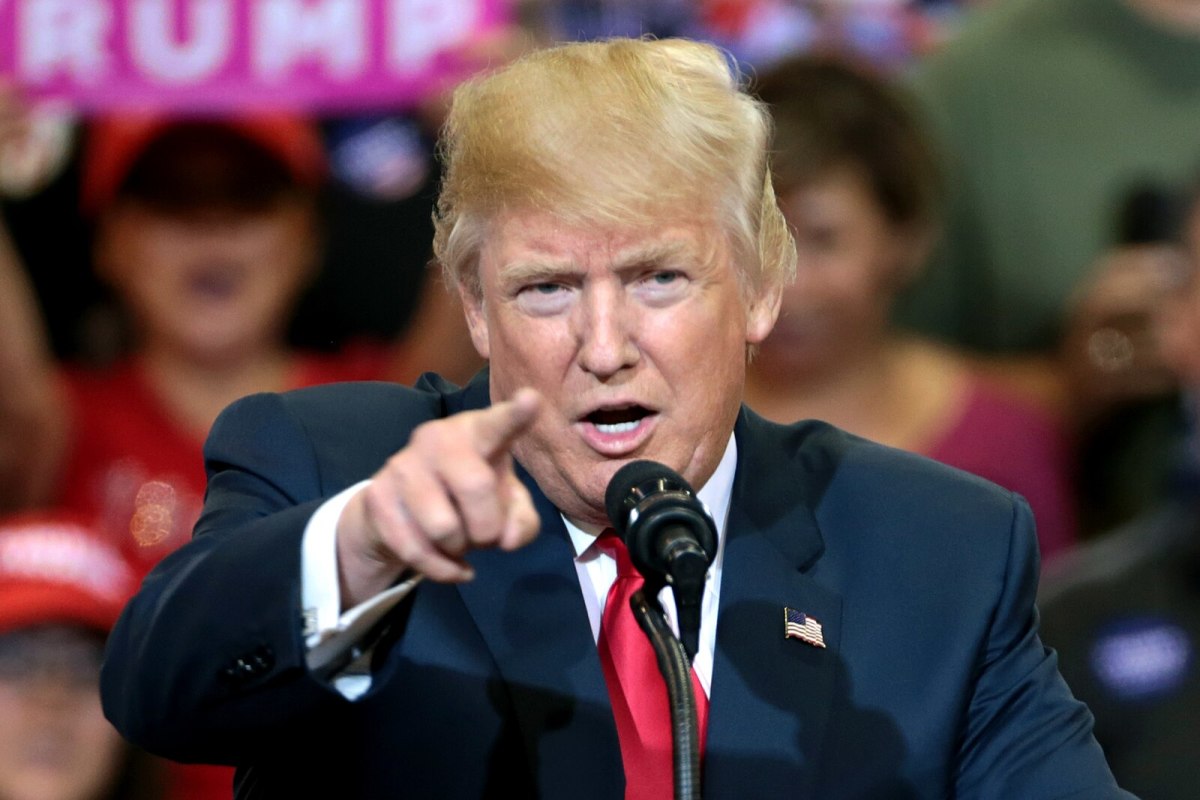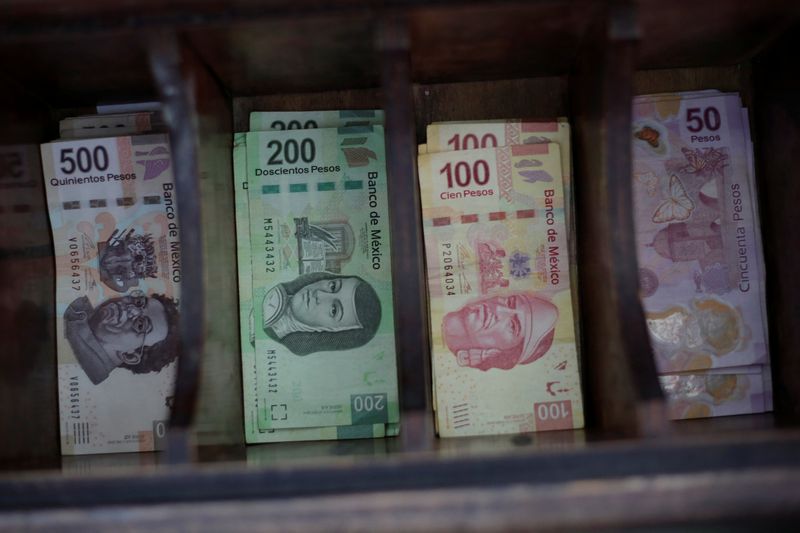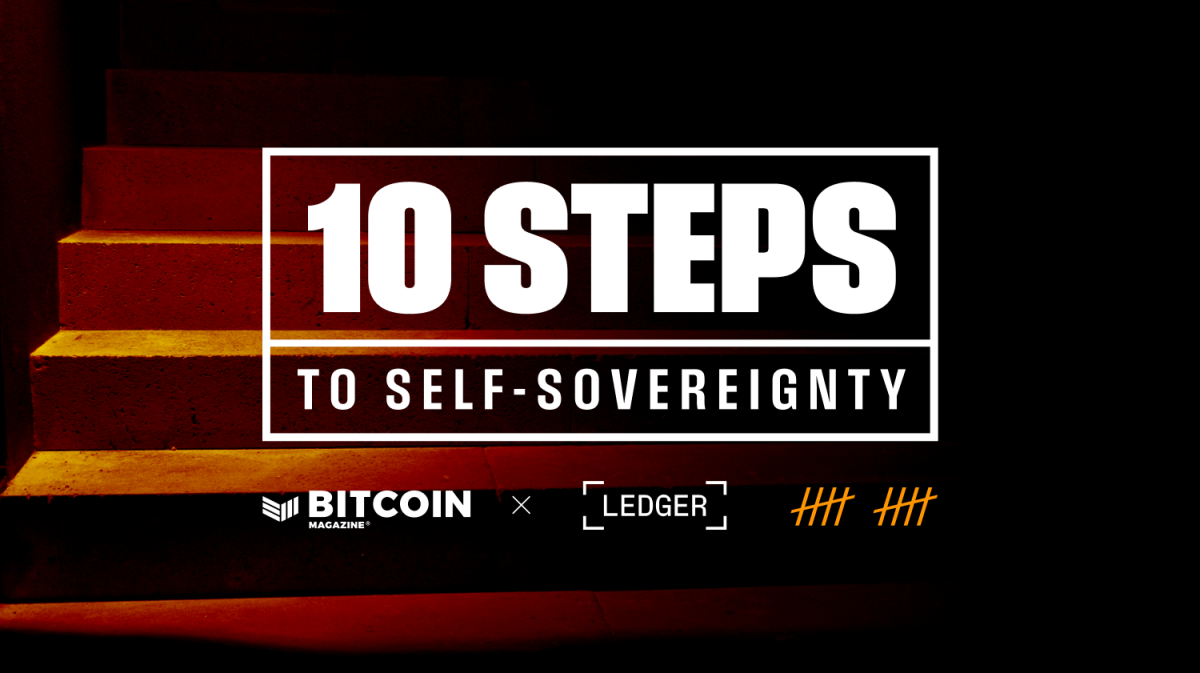Month: June 2024
Bitcoin to Hit $150,000 if Trump Wins Presidency, Predicts Standard Chartered
In a bold forecast, Standard Chartered’s head of digital assets research, Geoff Kendrick, has predicted that Bitcoin could surge to $150,000 if Donald Trump wins the upcoming U.S. presidential election. “As we approach the U.S. election, I expect $100,000 to be reached and then $150,000 by year-end in the case of a Trump victory,” Kendrick stated.
JUST IN: #Bitcoin to reach $150,000 if Donald Trump wins presidency, says Standard Chartered. pic.twitter.com/4Kaq4P0BRf
— Bitcoin Magazine (@BitcoinMagazine) June 6, 2024
The prediction comes amidst a backdrop of economic indicators and political developments influencing the Bitcoin market. Kendrick highlighted that the next significant driver for Bitcoin’s price would be the U.S. election.
Kendrick also noted that Bitcoin could reach a new record over the weekend if the nonfarm payrolls report, to be released on Friday, is favorable. Bitcoin’s current all time high, set on March 14, stands at $73,770. A positive jobs report could pave the way for Bitcoin to reach $80,000 later this month, he noted.
The forecast underscores the significant impact political developments can have on the Bitcoin market. With over 50 million Bitcoin and crypto holders in the United States, the outcome of the presidential election is poised to play a crucial role in shaping the future of Bitcoin.
BitReXe: Enabling Parallel VMs on Bitcoin Network
Ethereum is still working on a complementary plan for parallel EVM, but Bitcoin can be soon expecting its own parallel VM layer 2.
Let’s firstly understand why Ethereum cannot achieve parallel EVM.
To maintain network consistency and security, EVM has a crucial feature in its design: transactions are executed sequentially. Sequential execution ensures that transactions and smart contracts can be executed in a deterministic order, making it easier to manage and predict the blockchain’s state. This design choice prioritizes security, reducing potential complexities and vulnerabilities associated with parallel execution. However, under high loads of transaction requests, this sequential execution can lead to network congestion and delays, similar to a single-lane highway.
Is it feasible to simply add lanes? Referencing existing solutions of so-called parallel VMs, including sharding chains like Near. These chains proposed to scale blockchain by introducing more VMs to scale smart contracts. Essentially the workload of one smart contract still lies in a certain VM. If all smart contracts on this chain consume an equal amount of TPS, then the problem is solved. However, if only a few contracts, such as Aave and Uniswap protocols, consume over 90% of block space, having contracts running on a single shard means only scaling at the chain level without benefiting from the improvements brought by sharding. Adding lanes without the ability to switch lanes represents the current dilemma of parallelization of VMs.
The Parallel EVM involves cutting or caching data at the data layer. However, limited by EVM’s programming model, Solidity, as the most popular smart contract programming language, cannot maximize the potential of parallel blockchain architecture. It’s akin to not programming with SQL on NVIDIA’s GPU. Solidity lacks expressions for parallel architectures like Relay Execution and lacks a defined final atomicity for parallel transactions.
True parallelism in blockchain architecture requires achieving the result that transactions of one smart contract can run on multiple VMs simultaneously. A programming model like CUDA is needed to fully leverage a parallel model in blockchain architecture.
BitReXe mentions Bitcoin introduces Turing-complete parallel VM Layer 2 to provide underlying infrastructure support for real applications in the Bitcoin ecosystem and an exclusive programming model for parallel VMs, PREDA.
How BitReXe achieves Parallel Vms on Bitcoin
Parallel VMs
The following illustration highlights the distinctions between BitReXe and other initiatives promoting Parallel VMs. As shown in the leftmost segment of the figure, Ethereum adheres to a single-machine state model, wherein all codes (smart contracts) and states (data) are replicated and managed by each blockchain node through its Ethereum Virtual Machine (EVM). The extant projects utilize Parallel EVMs, as shown in the middle section of the figure, where a single smart contract is deployed on a dedicated VM (or VMs within a designated shard to uphold consensus). All transactions pertaining to the smart contract are processed by the VM (or VMs of the shard in a fully duplicated manner).
In BitReXe’s unified parallelization model, as shown in the rightmost segment of the figure, all smart contracts are deployed across all VMs of the network. The states of a smart contract undergo partitioning and distribution across distinct VM instances, ensuring non-overlapping allocation. Correspondingly, transactions of the smart contract are segmented and distributed for independent and parallel processing across VMs. In the ideal case, this approach facilitates a linear scaling of overall transaction throughput and state capacity with an increasing number of VMs.
The primary challenge lies in efficiently managing the dependencies between execution logic (code) and contract state (data) while enabling independent VM execution and avoiding synchronization, since the comprehensive execution logic of a transaction may entail access to multiple segments of contract states, each residing in separate VMs after state partitioning.
PREDA
We present Parallel Relay-Execution Distributed Architecture (PREDA), a groundbreaking programming model designed to scale out smart contracts on sharding blockchains, parachain systems, and layer-2 blockchains. PREDA supports a parallel architecture: if Solidity for Ethereum is likened to program on a single-core CPU, PREDA’s parallel architecture for BitReXe is akin to CUDA for NVIDIA’s GPU.
The PREDA model introduces two key components: (1) “Programmable Contract Scopes”, enabling programmers to define contract state partitioning based on the application’s data access pattern, narrowing data access range and minimizing data dependency; and (2) “Asynchronous Functional Relay”, allowing programmers to articulate transaction logic with implicit data dependencies for flexible execution across multiple execution engines (VMs). Implemented as an extended Solidity language, PREDA includes additional syntax for programmable contract scopes and statements for asynchronous functional relay.
The figure illustrates the PREDA version of a simplified ERC20 contract. The “@address” keyword defines the scope of users’ balances, equivalent to Solidity’s map definition but specifies fine-grained and separable states for partitioning by address. At runtime, states partitioned by address are managed by a set of VMs in the BitReXe chain. Different states are not maintained by different sets of VMs. The transfer function within the “@address” scope, invoked by payers (i.e., user addresses initiating transfer transactions), initiates a ” relay” for depositing to the payee. This relay, executed by a VM hosting the payee’s address states, adds funds to the payee’s balance.
In PREDA, a smart contract can have multiple scopes with variables and functions defined. Multiple functions and variables of arbitrary types including containers can be defined in a scope. Multiple relays, conditionally or unconditionally, can be initiated in a single function call, allowing recursive initiation and enabling transaction execution flow to be moved multi-hops across different VM instances. This relay-execution approach decomposes a transaction into multiple Micro-Transactions, ensuring limited state access in a single virtual machine and avoiding race conditions. In the PREDA transfer smart contract, decomposing the transaction into a “withdraw” micro-transaction and a “deposit” micro-transaction enables parallel execution of these two types of micro-transactions, as long as their targets (addresses in this case) are mapped to different virtual machines.
BitReXe organizes virtual machines into multiple consensus groups, each independently running a consensus protocol (PoW-based in the implementation) to reach consensus on executed transactions. Across-group consensus is implemented to maintain correctness and consistency for asynchronous functional relays, implemented as relay transactions in BitReXe.
Bitcoin Layer 2
Asset issuance paradigm on Bitcoin layer like inscription is constantly exploiting a vulnerability in Bitcoin, says Luke. While money never sleeps, just as inscriptions may never die. Bitcoin is in desperate need of a truly scalable layer 2 that can release such pressure and save the ledger size from growing too fast which will weaken the decentralization. Such a goal is very unlikely to be achieved by an EVM+Bridge solution.
BitReXe proposes Parallel VMs and PREDA to scale bitcoin. Meanwhile, it adapts to the security of bitcoin. It uses BTC as gas fee, shares the security of Bitcoin, and provides a trustless asset settlement between the two chains.
BitReXe reuses hashing computing power by the Bitcoin network which is carried by on-chain blocks, orphan blocks, and premature blocks as proof-of-work to create valid blocks in the layer-2 network without modifying the Bitcoin protocol. Merge miners receive rxBTC as rewards, a 1:1 pegged bitcoin on the BitReXe network. Users pay gas fees with rxBTC for transactions, interacting with smart contracts, and other on-chain activities. Fullnodes lab, the dev team of PREDA and BitReXe is about to introduce a trustless asset settlement bridge solution between Bitcoin and BitReXe, where rxbtc peg-out is at the same time someone’s BTC peg-in. Official peg-out addresses are no longer required, thus trust assumption is therefore eliminated.
Our high expectations for the Bitcoin ecosystem stem from its ability to solve problems that Ethereum – as Bitcoin’s testnet – has not addressed.
@Bit_ReXe believes that this issue stems from EVM lacking parallel mechanisms leading to blockchain trilemma and aims to directly solve it on Bitcoin Layer 2.
If this issue can be resolved on Bitcoin, then TVL benchmarking or even surpassing Ethereum by more than three times on Bitcoin Layer 2 would present a fundamental breakthrough.”
This is a guest post by BitPNova. Opinions expressed are entirely their own and do not necessarily reflect those of BTC Inc or Bitcoin Magazine.
Why Joe Biden Hates Bitcoin
Over the last four years, President Joe Biden has demonstrated a clear reluctance to support the Bitcoin and cryptocurrency industry, as recently evidenced by his veto of significant legislation and the broader stance of his administration. On May 31, Biden vetoed a pivotal bill that would have allowed highly trusted financial institutions to custody Bitcoin and other cryptocurrencies.
BREAKING: 🇺🇸 President Biden vetoes bill that would allow highly regulated financial firms to custody #Bitcoin and crypto. pic.twitter.com/TMHavdWRx7
— Bitcoin Magazine (@BitcoinMagazine) May 31, 2024
The legislation in question had garnered bipartisan support in both the House and Senate. It aimed to provide a regulatory framework that would enable banks and other financial entities to securely hold digital assets, thereby further integrating Bitcoin into the mainstream financial system. Proponents of the bill argued that such a framework would enhance security of spot Bitcoin ETF funds by distributing the honeypot of coins currently held by only a couple institutions, promote innovation, and help facilitate the growth of the Bitcoin industry. However, Biden’s veto reflects his administration’s lack of support for the industry, where the President previously compared crypto traders to “wealthy tax evaders”.
The Biden Administration also published a report attacking Bitcoin and Proof of Work mining, promoting a Central Bank Digital Currency (CBDC) instead, stating “A U.S. CBDC would have the potential to offer significant benefits”. Biden wanting to embrace a CBDC, which would allow the Federal government to have complete control over their citizens finances, further shows his true colors and reasoning for not supporting Bitcoin.
Recently, Joe Biden’s Department of Justice arrested the founders of popular privacy focused Bitcoin mixing service, Samourai Wallet, and charged them with money laundering. U.S. Senator Cynthia Lummis defended the Samourai founders, stating that “this stance contradicts existing Treasury guidance, common sense, and violates the rule of law.” Renowned whistleblower Edward Snowden also commented on the arrest:
NEW: Edward Snowden on the U.S. Department of Justice arresting #Bitcoin mixing service Samourai Wallet founders and CEO pic.twitter.com/qmigHJzmZU
— Bitcoin Magazine (@BitcoinMagazine) April 24, 2024
In addition, the Democratic Party in general has also shown a reluctance to support pro-Bitcoin legislation. Key figures like Senator Elizabeth Warren have been particularly vocal in their opposition to the crypto industry. Warren has often criticized cryptocurrencies for their environmental impact and regulatory challenges, and infamously stated that she is “building an anti-crypto army” to address what she perceives as the industry’s threats to financial stability and consumer protection.
In stark contrast, former President Donald Trump has recently embraced Bitcoin and cryptocurrencies. On June 1, 2024, Trump announced that his campaign would accept Bitcoin payments through the Lightning Network, facilitated by OpenNode, a Bitcoin and Lightning Network infrastructure provider. Trump has recently said that he “will ensure that the future of crypto and Bitcoin will be made in the USA…I will support the right to self custody to the nations 50 million crypto holders”. Trump has also recently stated that he is “very positive and open minded to crypto companies,” and that “Our country must be the leader in the field. There is no second place.”
Despite the Democrats’ stance, the Bitcoin industry is becoming an increasingly influential force in U.S. politics. Recent polls indicate that crypto voters are largely nonpartisan, with no significant leaning towards either the Republican or Democratic parties. This demographic represents a substantial and growing portion of the electorate, with over 50 million Bitcoin and crypto holders in the United States. As the 2024 Presidential election approaches, Bitcoin policy is emerging as a critical issue for candidates to address.
The evolving stance of political leaders on Bitcoin and cryptocurrencies underscores the growing importance of these assets in shaping economic and regulatory policies. For Biden, his reluctance to embrace Bitcoin is alienating a significant segment of the voter base. Crypto advocates argue that clear regulatory frameworks and mainstream acceptance of Bitcoin would drive economic growth, foster innovation, and enhance financial inclusion. However, the Biden administration’s focus remains on preventing that from happening.
The rise of Bitcoin has introduced new dynamics into the political landscape. While Bitcoin operates in a nonpartisan manner, appealing to individuals across the political spectrum, this does not mean all politicians will embrace it. Joe Biden and the Democrats are turning a non-partisan technology into a partisan issue.
In conclusion, the Biden administration and majority of Democrats favor a CBDC over a decentralized cryptocurrency like Bitcoin. A CBDC aligns more with Biden and the Democrats than Bitcoin, as Bitcoin is less appealing to them because it does not help them achieve their aspiring authoritarian goals.
As the 2024 Presidential election looms, the role of Bitcoin policy in shaping voter preferences and political strategies is becoming increasingly evident. With over 50 million Bitcoin and crypto holders in the United States, the decisions of political leaders on digital assets will likely play a pivotal role in the upcoming election, reflecting the growing significance of Bitcoin in the broader economic and political landscape.
Robinhood To Buy Bitcoin and Crypto Exchange Bitstamp For $200M
Robinhood has agreed to acquire leading Bitcoin and crypto exchange Bitstamp for $200 million in cash, marking a major expansion of its Bitcoin and crypto business. The deal is expected to close in the first half of 2025.
BREAKING: ROBINHOOD BUYS #BITCOIN AND CRYPTO EXCHANGE BITSTAMP FOR $200 MILLION. pic.twitter.com/Q9LfBDw3Di
— Bitcoin Magazine (@BitcoinMagazine) June 6, 2024
Founded in 2011, Bitstamp is one of the world’s oldest and most established crypto exchanges. It operates across Europe, Asia and the U.S., with over 50 licenses globally. The acquisition will bring Bitstamp’s institutional and retail customers under Robinhood’s umbrella.
Robinhood aims to leverage Bitstamp’s reputation for resilience and trust to bolster its own Bitcoin and crypto offerings. Bitstamp underwent over a decade of market cycles and maintained high-security standards.
The purchase comes as Robinhood faces scrutiny from the SEC over its crypto division. However, Bitcoin and crypto remain a key driver of growth, with transaction revenue from crypto trading jumping 40% last year. Acquiring an established platform like Bitstamp could significantly expand Robinhood’s global reach.
Robinhood general manager Johann Kerbrat said the deal is a “major step in growing our crypto business” and will help Robinhood “expand our footprint outside of the U.S. and welcome institutional customers.” Robinhood CEO Vlad Tenev says, “We believe crypto will fundamentally reorganize the financial system.”
Robinhood has already been offering Bitcoin and crypto trading services in the EU. But buying Bitstamp provides a ready-made base of customers and regulatory licensing across multiple jurisdictions. As Bitcoin demand increases, the acquisition positions Robinhood to capture growing trading volumes.
Rich Dad, Poor Dad Author Predicts Bitcoin to Hit $350,000
Renowned personal finance author Robert Kiyosaki has predicted Bitcoin will reach $350,000 by August 25, 2024. The Rich Dad, Poor Dad writer has long been a Bitcoin bull, touting Bitcoin as hard money alternatives.
NEW: Rich Dad, Poor Dad author predicts #Bitcoin will reach $350,000 by August 2024.
Are you prepared? 🙌 pic.twitter.com/6Isr7UZUVT
— Bitcoin Magazine (@BitcoinMagazine) June 6, 2024
In a recent X post, Kiyosaki projected Bitcoin to hit $350,000 based on his lack of faith in U.S. leadership. He labelled President Biden, Treasury Secretary Janet Yellen, and Fed Chair Jerome Powell as “the 3 Stooges in real life” and said he was confident in their incompetence.
Kiyosaki advised buying more Bitcoin to protect against poor economic stewardship. He has frequently criticized the U.S. government’s stimulus spending and money-printing policies under Biden.
While a long-term Bitcoin believer, Kiyosaki’s $350,000 target within two months is an extremely bullish projection. For bitcoin to reach that price by August, it would need to surge over 380% from current levels near $71,000.
Still, the author sees potential for explosive Bitcoin growth ahead, calling his prediction “not a lie.” Kiyosaki endorsed Ark Invest’s $2.3 million long-term Bitcoin price forecast earlier this year.
The bold projection follows surging inflows into U.S. spot Bitcoin ETFs, which saw their second-highest daily haul ever on Tuesday at over $880 million.
Improving mainstream acceptance has buoyed Kiyosaki’s outlook. With major financial centres like Australia, the U.K., and the U.S. embracing spot bitcoin ETFs, confidence is rising.
While $350,000 by August appears overly optimistic, the author advocates Bitcoin’s potential as a hedge against what he views as unsound government policies. Kiyosaki urges investors to continue accumulating positions in Bitcoin.
Dollar steadies, euro edges higher ahead of key ECB meeting
Post Content
BoC rate cut likely to be followed by more in 2H24
Post Content
Unwinding of hugely popular currency trade rocks markets
Post Content
Asia FX advances as rate cut bets put dollar near 2-mth low
Post Content
10 Steps to Self-Sovereignty with Bitcoin
Bitcoin Magazine’s “10 Steps to Self-Sovereignty” series in partnership with Ledger is officially concluded. Over the last few months we have gone through many different topics, ranging from specific guides on how to manage and interact with your bitcoin securely and in a self-sovereign fashion, to explanations of fundamental properties that make Bitcoin a valuable and functioning asset and network.
Now that the series has concluded, let’s look back at each article and the topic it covered.
Step 1 | Understanding Your Bitcoin Keys: Bip39 Seed Words
This first article takes a look at how to actually manage your seed phrase used to generate your private keys, how they work under the hood, and how to safely generate them. It is absolutely critical that users understand how to manage them properly.
This article gives readers all the basics they need to know.
Step 2 | Bitcoin Has No Top Because Fiat Has No Bottom: Understanding Monetary Debasement
The second article discusses the dynamics of monetary debasement with fiat currencies, and the history of that across different societies. Understanding the abuse of the money printer by central banks and past fiat authorities is an important step to understanding why Bitcoin’s immutable monetary policy makes it so valuable in the world today.
Step 3 | The Do’s and Don’ts of Bitcoin Self-Custody
The next article walks through important milestones and things to ensure you do correctly when managing your funds in Bitcoin. Self custody goes beyond simply generating a seed phrase and putting it in a drawer. When you manage your own bitcoin, the responsibility is entirely yours and no one else’s.
This article walks readers through important things that must be done in managing your own keys, and how to do them correctly.
Step 4 | The Infosec Basics: How To Keep Your Bitcoin Seed Phrase Secure
Generating your seed phrase is step one of self custody, but over time you have to guarantee that it is kept safe from loss and secure from prying eyes and thieves. The fourth article walks readers through how to store their seed phrase backups safely.
Where to store them, where not to store them, the types of materials to store them with, this article covers them all.
Step 5 | Fully Noded: The Basics And Benefits Of Running A Bitcoin Node
The fifth article discusses one of the most important aspects of using Bitcoin aside from managing your own private keys: running a node. It explains why this is important, the network after all only exists because of all the disparate users and businesses who run nodes.
It also explains the direct benefits to you the user gained from running a node and verifying the blockchain yourself.
Step 6 | Quality Money: Bitcoin To Become Scarcer Than Gold Post-Halving
The sixth article compares Bitcoin to it’s analog predecessor: gold. This last halving marked Bitcoin’s inflation rate dropping below that of the king of analog store of value. Gold has always been used a comparison to explain Bitcoin’s properties as money, this article explains why Bitcoin is inherently designed to exceed gold’s value proposition monetarily.
Step 7 | Bitcoin Is Borderless: How Decentralisation and Permissionlessness Grant Autonomy Across Political Jurisdictions
Article seven dissects why Bitcoin is usable all across the world. The network is not concentrated in any single jurisdiction, meaning that it is accessible anywhere in the world. This provides Bitcoin with a unique value proposition in terms of bringing your wealth with you anywhere in the world.
Step 8 | Bitcoin Is Built To Last: How The Network Defends Against Attacks
The eighth article reinforces why Bitcoin is so robust and resilient against failure and attacks. It dissects numerous possible ways the network could be disrupted or attacked, and walks through each scenario to demonstrate why in each of them the likely outcome is that Bitcoin survives and continues to function.
It would take a truly cataclysmic event to bring the Bitcoin network to a halt.
Step 9 | Going Bankless: Bitcoin Offers The Ultimate Financial Freedom
The ninth article looks at one of Bitcoin’s chief value propositions: the ability to spend your money self custodially, without permission from anyone. It looks at both the benefits of Bitcoin that cannot be provided by traditional banks and financial services, as well as the challenges still on the horizon that must be conquered in order to scale these valuable uses to the world.
Step 10 | Running The Self-Sovereign Business
The final article in the series looks at the use of Bitcoin in commerce. Money is meant to be transacted with, and this inherently means that businesses and service providers must accept it in exchange for goods and services. This article looks at the issues that a business must consider when accepting Bitcoin as a form of payment and using it as money in the course of business operations.
Wrapping Up
This series of articles can be a valuable resource for new Bitcoiners looking to enter the space and take full advantage of the sovereignty that Bitcoin has to offer for those willing to take on the responsibility.
Each article is focused on a single topic to either guide readers through the act of custodying their own coins, and ensuring they are equipped to do so safely, or ensure that a well rounded understanding of the value proposition of Bitcoin in a certain area is well understood.
Both of these types of content are valuable and vital in ensuring that Bitcoiners have a sound footing under them when navigating this space. Hopefully all of you have gained some valuable insight from reading them.
For more information on Ledger and self-custody, visit: https://www.ledger.com/









